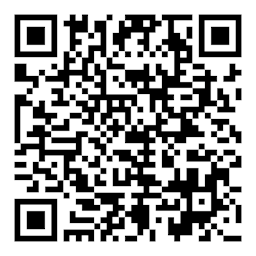Case Study: Large National Healthcare System
Ricoh helps a healthcare system transform faxing to reduce costs, increase efficiency and improve patient care.
About the customer

This not-for-profit healthcare system began more than 150 years ago and today has more than 90 facilities throughout the Pacific Northwest providing a wide range of patient care. Its network includes hospitals, clinics, physicians, home health services, health plans and affiliated health services. Like many healthcare systems, the primary mode of communicating with all its owned entities and community partners is fax-based. However, the pitfalls of this traditional approach to communicating patient information became more pronounced as the digital revolution continued to deliver transformative change to healthcare delivery.
Ricoh's Healthcare Direct Services enable healthcare systems to share information and cross over workflow boundaries — there are no lost orders, no duplicate orders and no unhappy patients that have to wait.
Challenge

Fax failure rates of 10 to 30 percent
Duplicate orders, higher information management costs
Inconsistent transmitting and sharing of patient information
Additional labor burden, risk of human error
Faxing as the primary way of communicating between its entities and community partners in this large healthcare network wasn't just inefficient — it posed a serious impediment to optimized patient care. Reliability was on the line since traditional paper-based fax failure rates of 10 to 30 percent are common. Fax transmission failure can lead to a breakdown in care collaboration and can result in duplicate orders, higher information management costs and lower patient and referring provider satisfaction.
There's also interoperability issues regarding the differing communication processes in place for paper-based providers and digital-based providers. In addition, for those areas of healthcare that have embraced technological change, the proliferation of different electronic health record (EHR) systems has been a barrier to transmitting and sharing critical patient information between locations. Real-time healthcare decisions also suffer with a paper-based fax process — lags in sending, receiving and processing information can represent the difference between life and death.
Workflow and labor issues also come into play. The multi-step process of receiving a paper fax, verifying information and entering it into a patient's EHR requires resources and staff. With each incremental step added to the workflow process, there's not only an additional labor burden but a higher risk of human error disrupting the process.
Solution
The healthcare system explored ways to embrace the digital revolution to advance the way it conducted business.
Conducted analysis at healthcare system locations
Identified highly varied levels of technology adoption
Leveraged existing fax and EHR technology for Direct Messaging
Engaged Ricoh's Healthcare Direct Services to conduct pilot program
The healthcare system's head of scanning and operations had already implemented a successful trial for converting faxes to digital images that were then integrated into their EHR system — providing a glimpse at what a paper fax-free world could look like. However, they still relied on daily human intervention and costly labor to scan and manage faxed paper documents so they could be accessed digitally by their other locations and community partners.
Ricoh was brought in to further analyze the ecosystem and recommend a fully automated paper fax-free technology solution that would eliminate the need for costly human involvement. Our team conducted an analysis at various healthcare system and community partner facilities and concluded we could leverage existing digital fax technology to get rid of paper-based faxing altogether. Despite the interoperability gaps that existed between facilities, all sites had faxing workflows in place. Their fax servers were already going through the phone journey so electronic direct messages could be sent back and forth through the same channel. In turn, community partners and provider clinics could enlist their existing EHR system to find and share patient information.
Ricoh's Healthcare Direct Services team conducted a quick, successful pilot to prove the solution worked at nine of the healthcare systems' locations. Given the success of the technology solution, the healthcare system will next work with us to begin the rollout to the additional healthcare system and community partners in the network. Our team will also provide change management services, working with the healthcare system to tackle resistance to change and encourage widespread adoption and use of the solution.

Results
Direct Messaging achieved 64 percent reduction in faxes — in just one week
Potential for better patient outcomes and satisfaction
Anticipated cost savings in paper, ink, supplies and labor
Expected market share growth by attracting new community partners
The way healthcare providers, caregivers and patients accept this paper fax-free transformation to Direct Messaging is still in its infancy. However, during a pilot study at nine healthcare system locations, the project team observed a 64 percent reduction in paper faxes — in just one week. This met the healthcare system's objective of proving the value of digital Direct Messaging and demonstrated that the technology worked. It also provided a business case for moving forward and rolling out a Direct Messaging solution enterprise-wide to the 81 remaining healthcare system and community partner locations.
The healthcare system is also focused on the benefits to patients. Overcoming issues with paper-based fax communications is expected to improve patient outcomes and satisfaction — and the healthcare system will measure this as a key performance indicator (KPI) going forward. With the digital Direct Messaging process in place, the healthcare system also anticipates actual cost savings in paper, ink and related supplies as well as savings from redirecting staff from the paper-based fax workflow to patient care.
Growing market share is on the mind of many healthcare systems. Current non-community partners will likely see a significant incentive to use a Direct Messaging environment to streamline communication between caregivers and improve sharing of patient information. As a result, the healthcare system anticipates that non-community partners — especially long-term care facilities with the highest interoperability gaps but the greatest need for streamlined information exchange — will be more receptive to new partnerships, thereby creating new revenue streams.
